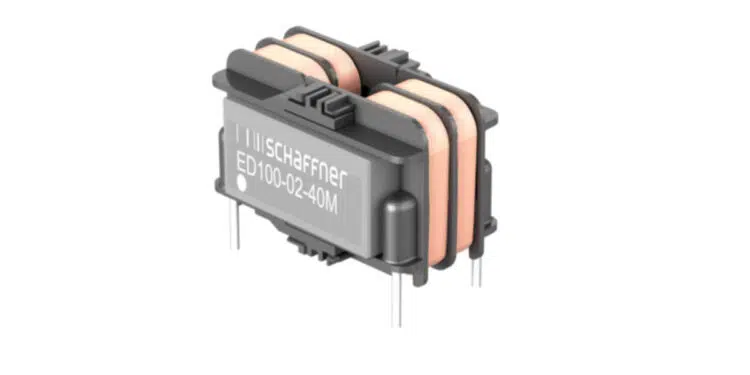Schaffner, the internationally leading company in the field of electromagnetic compatibility, extends its range of ED100 and ED101 high performance common-mode chokes for lighting applications.
The new ED100/ED101 EMC filter series has been designed specifically for the requirements of LED driver circuits. The new choke’s common-mode inductance is matched by a substantial differential-mode inductance. With only one component required on the PCB both types of noise can be mitigated, saving cost and space while increasing reliability.
In the last decade, light emitting diodes (LED) have disrupted the lighting industry. No application has remained untouched. Even harsh and ambitious applications such as powerful streetlamps and car headlights are now common applications for LEDs.
LEDs are exceptionally energy efficient and robust, but they are very sensitive to current fluctuations. Driver circuits are used to keep the current in an optimal range. This is necessary to set the desired efficiency and luminosity, as well as to protect the LEDs from harm.
Increase of power factor
LED drivers must not only be highly efficient and cost-effective, but also comply with EMC regulations. Inevitably, they generate electro-magnetic interference (EMI). To suppress EMI and meet EMC regulations, common-mode (CM) chokes are a good alternative to capacitors in LED drive circuits. They reduce the earth leakage current, help stabilizing the power factor and increase overall reliability.
ED100 and ED101 chokes have identical footprint and dimensions, offering same level of CM inductance while ED101 offers much higher differential mode noise mitigation than ED100 for more demanding applications.
Key features:
- Space Saving on PCB; CM and DM inductances in one package
- Choice of differential-mode attenuation: high (ED100) / very high (ED101)
- Rated currents 0.2A to 2 A; choice of 18 products with same PCB pin layout
- High reliability with MTBF of 13 million hours
- Increased power factor and reduced earth leakage current by eliminating or reducing capacitors
Typical applications are LED equipment, especially LED driver circuits and displays, fluorescent lamp ballasts or any other application that with high demand for differential-mode performance.
The ED100 / ED101 series is designed for a maximum continuous operating voltage of 300 VAC, 50 / 60 Hz. They meet the requirements for RoHS and REACH regulation.































